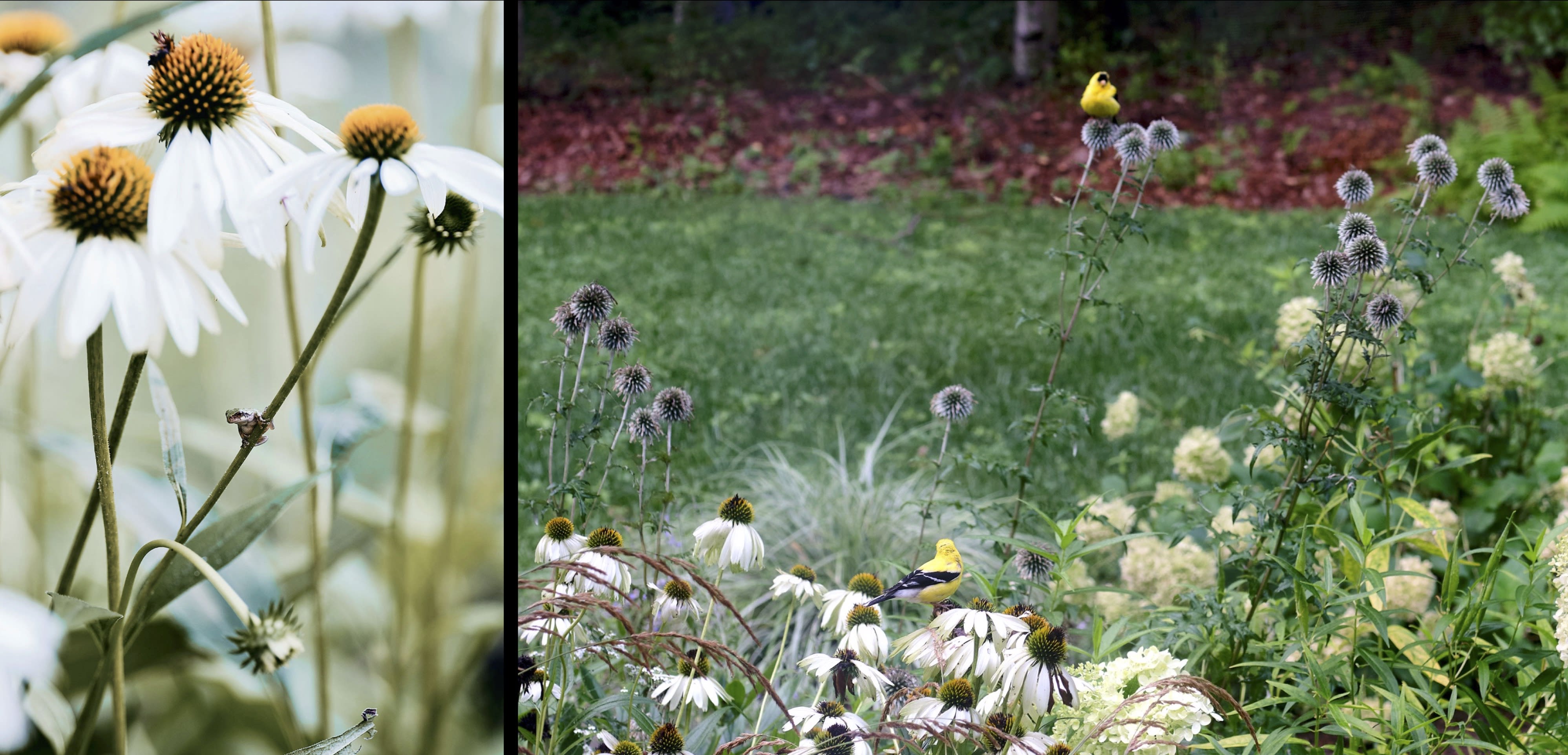
When designing sustainable landscapes, selecting the right plants is crucial for promoting ecosystem health and biodiversity. A common sustainability practice is to prioritize native plants, which have naturally evolved in a region over time. However, while native plants are vital, non-native and naturalized species can also play a role in resilient landscape design.
In this article, you’ll explore some of the ways in which non-native plants can contribute to thriving ecosystems despite sustainable landscape design’s heavy focus on native plants.
What Are Native Plants?
Native plants naturally occur in a region without human intervention, making them well-adapted to local climate, soil, and wildlife interactions. They support biodiversity and ecosystem stability.

Native bottlebrush buckeyes. Courtesy of Matthew Cunningham Landscape Design.
What Are Non-Native Plants
Also called “exotic” plants, these species have been introduced to an area, either intentionally or accidentally. Not all non-native plants are harmful, but their ability to thrive varies. There are a few types of non-native plants listed below.
Invasive plants: A subset of non-native plants that aggressively spread, often displacing native species and disrupting local ecosystems.
Naturalized plants: Non-native species that have adapted to a region and sustain themselves without human intervention, but do not exhibit the aggressive behavior of invasives.
Noxious plants: These plants are designated as harmful due to their impact on human health, agriculture, or ecosystems. Governments often regulate their control.

Non-native white coneflowers. Courtesy of Matthew Cunningham Landscape Design.
The Role of Non-Native Plants in Sustainable Landscapes
While many sustainability experts recommend using 70-80% native plants, incorporating a 20-30% mix of non-native species can offer ecological and practical benefits. The key is careful selection: incorporating non-native plants that coexist with native species without disrupting the ecological balance. Thoughtfully chosen naturalized species can:
Support biodiversity: Some non-native plants provide habitat, nectar, and food sources for pollinators and wildlife.
Improve soil and nutrient cycling: Certain non-natives contribute to soil biochemistry, enhancing site health.
Increase affordability and availability: Locally available non-native plants may be more cost-effective and accessible for projects.
Adapt to changing climates: With shifting temperature ranges due to climate change, selecting neighboring-region native species or well-adapted non-natives can future-proof landscapes.
Tools for Identifying Native, Non-Native, and Even Invasive Plants
Effective plant selection requires reliable data. Fortunately, there are several resources that can help you identify plants suitable for specific regions.
The USDA Plants Database is a comprehensive reference for native and non-native species. Local institutions, such as regional arboretums and botanic gardens, can provide plant lists and conservation insights.
Academic research also offers timely ecological data and best practices. Platforms like Evergreen Connect, Plant Partner, Proven Winners, the RHS Plant Finder, and Plant Master provide valuable plant data, including native region classifications.
And, if you’re using Vectorworks Landmark, you innately have access to a robust database of plant information directly within the software’s interface.

Native serviceberries. Courtesy of Matthew Cunningham Landscape Design.
Just as plant nomenclature evolves, so does our understanding of native and non-native plant interactions. The best approach is to stay informed through regional ecology experts, research institutions, and reliable plant databases. Doing so allows you to stay current with your practice when it comes to planting design.
Featured image: Barangaroo Reserve planting plan, courtesy of PWP Landscape Architecture.
Create Stunning Planting Plans
Learn more about using the premiere landscape design software.
Stay in the know with the latest insights
Subscribers receive news, customer stories, success and learning tips, event information, and other important announcements form Vectorworks.
By submitting this form, you agree that Vectorworks, Inc. and its authorized partners may contact you in regards to news, offers, and the use of our software, services, and platforms. Learn more about our privacy practices and your data on our privacy page.*